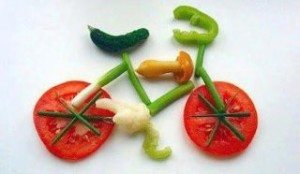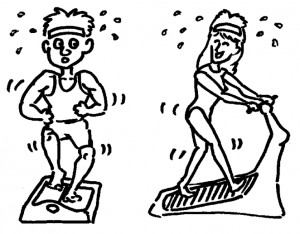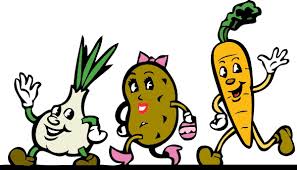GREEN IS THE THEME
Oh yeah, y’all — St. Patty’s day! Now, in the spirit of celebrating this most festive of holidays responsibly, here are some topics on how incorporating more “green” in our lives will allow us to eat healthier, celebrate conscientiously, all while helping out our mother earth.
St. Patty’s Day Fun Fact
St. Patrick was actually of Scottish descent, not Irish, and contrary to popular folklore he never chased any snakes out of Ireland.
Environment
Have you heard of “Carbon footprint”? Well in short, it is a measure of the impact our activities have on the environment, such as transportation and production. Researchers atCarnegieMellonUniversityhave suggested that it is not so much the “food miles” but more so the dietary choices that we make.
Now, by changing only one day per week’s meat and dairy-based calories to chicken, fish or vegetables would have about the same impact. Also, shifting entirely from an average American diet to a vegetable-based one would reduce the same emissions as 8,000 miles driven per year. By no means am I trying to convert you to a vegetarian, but if you are looking for suggestions to help mother earth out while still following a balanced diet, then pull back on red meats & dairy, and increase your chicken, fish and veggies. Maybe the cows that work for Chik-Fil-A are on to something.
Power of Leafy Greens
What if I told you that by consuming this item, it will help you lose weight, prevent cancer, regulate digestion, maintain eye health, boost your immune system, increase bone strength, and has anti-aging properties! Interested???
Leafy greens contain high levels of dietary fiber, magnesium, potassium, folic acid, calcium, vitamins A-C-E-K and phytonutrients. Look for favorite recipes that include bok choy, spinach, broccoli, collar greens and lettuce.
Green Antioxidants
Green tea…The Cancer Fighter and them some! Well, at least some recent research has shown for this to be true. One study demonstrated showed a lower recurrence of cancer in women with stage 1 & 2 breast cancer after surgery. Other studies included a reduced risk of developing lung cancer by 18%, a reduced prevalence of clogging the heart’s blood vessels (especially in women), and also that green tea antioxidants fight obesity and lowers LDL cholesterol. Many of these studies come from our friend across the pond, where green tea and the consumption of fish and soy proteins is more prevalent .
No matter what side of the pond you live on, there is no denying that green tea has antioxidants (catechins) and compounds that scavenge for free radicals that can damage DNA and contribute to cancer, blood clots, and atherosclerosis. All these great benefits and only roughly 30 mg of caffeine.
March is also National Nutrition Month
The campaign, celebrated by all Dietitians and created by the American Dietetic Association, is designed to focus attention on the importance of making informed food choices and developing sound eating and physical activity habits. Also notably, March 9th is RD (registered dietitian) Day…so help celebrate a dietitian near and dear to you.
RECIPES for the Month – Some Green Monsters
Green Monster Smoothie
Blend together:
1 scoop vanilla whey protein
1 small banana
¾ c frozen pineapple
1 T flaxseed
1 -2 c fresh spinach leaves
2T greek yogurt
3 or 4 cubes ice
½ C water

Green Apple Lassie
Blend together:
2 cups Juice of juiced Granny smith Apples (juicer)
2 Tbsp 0% fat Greek yogurt
5 – 6 cubes ice
1 tbsp honey
Per serving (1 cup): cals 230, protein 7g, carbs 48g, fiber 3g.
(This recipe can be used with any fruit or vegetable selection. It may change the caloric content, green vegetables offering the greatest value of nutrients with the highest fiber and lowest sugar content)
Carrot and Ginger Smoothie
Juice together:
1 cup of carrots
½ avocado
½ lemon
¼ ” of fresh ginger
1 cup water
Pinch of sea salt
pinch of cayenne pepper
Per serving: (all ingredients – approx 12 – 14 fl oz):
Cals 210, fat 9g (good fat though), protein 3g, carbs 20g
Green Tea Berry Smoothie
¼ cup water (+ more if needed)
1 green tea bag
1 Tbsp milled flaxseeds
¾ cup frozen mixed berries
4 oz low-fat vanilla yogurt
¼ cup cranberry juice
Honey to taste (optional)
Boil water, add teabag, let seep for 3 mins.
Meanwhile, Blend until smooth: flaxseed, berries, yogurt and juice.
Squeeze and remove teabag. Add tea to berry mix, and blend again until smooth. Adjust consistency with additional water, and add honey to taste, if desired.
320 calories 8g fat 2g sat. fat
14 mg chol 11g pro 13g fiber.
BLUEBERRIES
Good source of: Vit. C & E, manganese, fiber, antioxidants, and phytochemicals
Works to: neutralizes free radicals, strengthens blood vessels, stabilizes collagen matrix, improves vision and reduces the risk of macular degeneration (ARMD), improves brain functioning reducing the risk for dementia and Alzheimer’s disease, improves learning capacity, lowers cholesterol, fights cancer, improves gastrointestinal functioning, and prevent urinary tract infections
FLAXSEED:
It is very high in omega-3 essential fatty acids – yes, the good fats. Omega-3 fat is referred to as an “essential” fat because it is not produced by the body, and must thus be consumed. Essential fats aid in lowering cholesterol, stabilizing blood sugar, lower the risk of certain cancers, and reduce the inflammation of arthritis, as well as the inflammation that accompanies certain illnesses such as Parkinson’s disease and asthma.
In addition to the omega-3s, the other components of flaxseed, namely lignans and fiber, are extremely beneficial on the health measuring stick, as well.. Both act as phytoestrogens and antioxidants, while the fiber contained in the flaxseed is of both the soluble and insoluble type.
CRANBERRIES:
Whether you drink cranberry juice, blend cranberries in smoothies, add cranberries to stuffing or enjoy cranberries in salsa, salads or side dishes, they can keep you healthy any time of the year. They are loaded with Vitamin C and other antioxidants.
Their crimson color comes from a flavonoid that may help lower your LDL- (bad) cholesterol, help prevent blood clots that cause heart attacks and strokes-and so protect you from heart disease. Their other plant substances may protect from cancers, gum disease and stomach ulcers.
Another better known benefit, substances in cranberries help prevent bacteria in the urinary tract from causing bladder infections.
YOGURT especially Greek yogurt, is a great source of both protein, and good carbs. Yogurt is also packed with a good source of calcium, great for healthy bones and thus reduces the risk of osteoporosis.
Have a Healthy March
ILANA



















